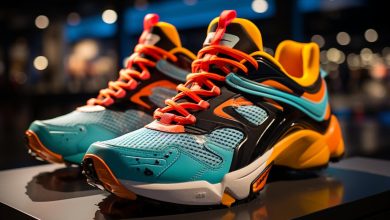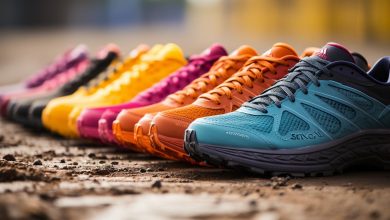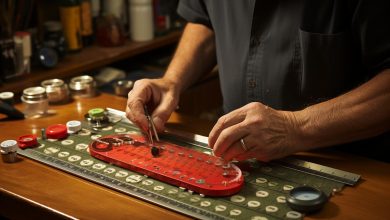Getting Fitted: Visiting a Specialty Running

Step into the world of specialty running as you lace up your shoes and embark on a journey to find the perfect fit.
In this article, we will guide you through the importance of proper shoe fitting, explain gait analysis, and help you navigate the vast array of brands and models available.
With our expert advice, you’ll discover how to maintain and care for your running shoes, ensuring they support you every step of the way.
Let’s dive in!
The Importance of Proper Shoe Fitting
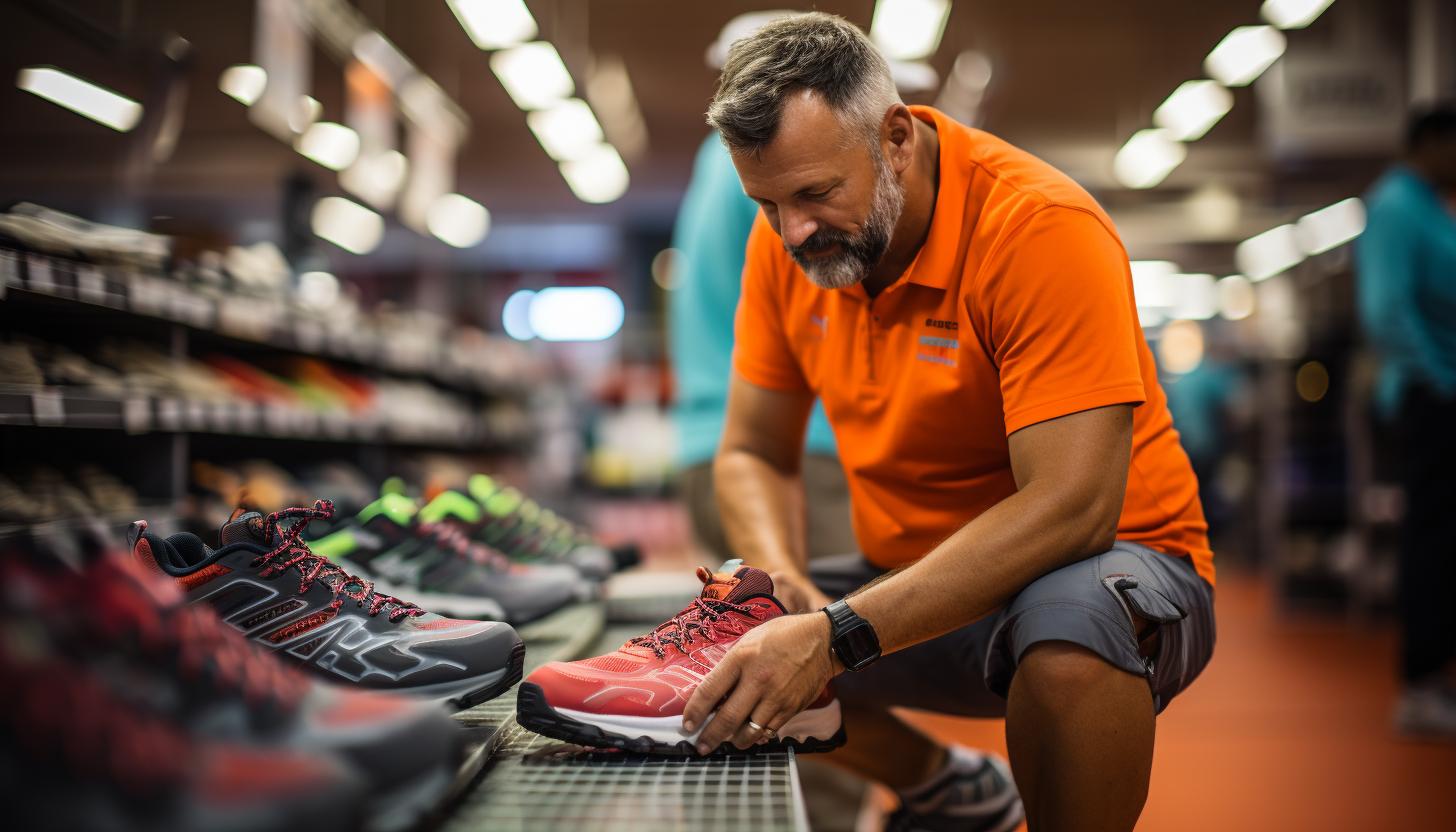
You’ll need to make sure you’re getting the right shoe size and fit for your feet. Proper shoe fitting is crucial for a comfortable and injury-free running experience. When it comes to shoe sizing, there are a few key factors to consider.
First, measure your foot accurately using a Brannock device or by seeking professional help at a specialty running store. This will ensure that you have the correct length and width measurements for both feet.
The benefits of professional fitting cannot be overstated. During a fitting session, an experienced salesperson will assess your foot shape, arch type, gait pattern, and any specific biomechanical issues you may have. They will guide you through various shoe options that cater to your individual needs. Professional fitters are trained to analyze how shoes feel on your feet while walking or running, making necessary adjustments if required.
By investing in proper shoe fitting, you’ll reap several advantages. Firstly, it reduces the risk of developing common running injuries such as blisters, calluses, plantar fasciitis, shin splints, or stress fractures caused by ill-fitting footwear. Secondly, wearing shoes that align with your foot’s structure and biomechanics can enhance comfort during long runs or races.
Remember that our feet change over time due to factors like age and pregnancy; therefore regular fittings are recommended throughout one’s running journey. Don’t underestimate the importance of finding the right shoe size and fit – it can make all the difference in enjoying a pain-free run!
Understanding Gait Analysis
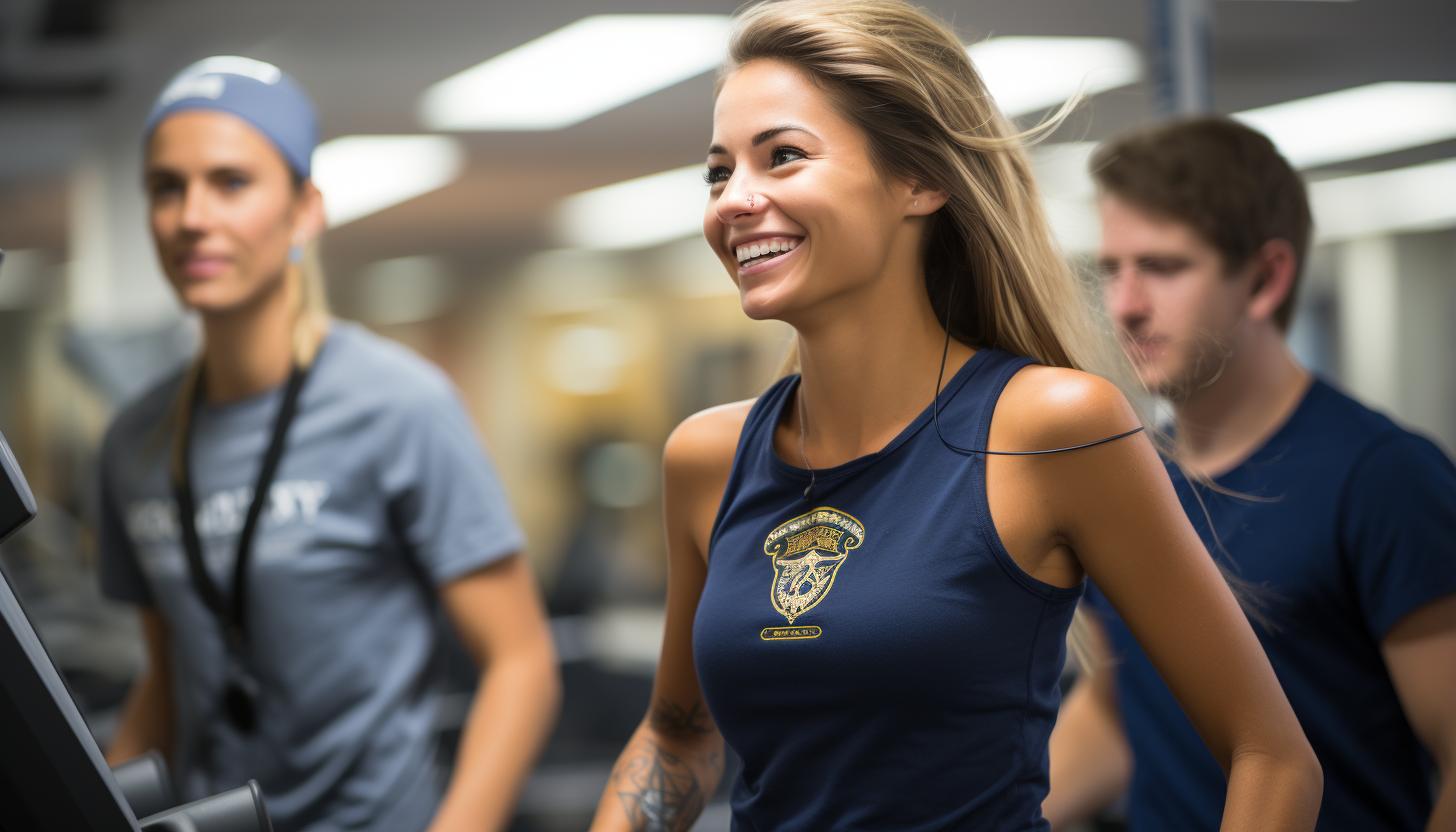
Understanding gait analysis involves analyzing your running stride to identify any potential imbalances or issues. By examining how your feet and legs move during each step, gait analysis can help determine if you are at risk for common running injuries and whether you could benefit from proper footwear.
Gait analysis is an essential tool for runners of all levels. It provides valuable insights into your running form, helping to pinpoint any areas of weakness or asymmetry. Through this analysis, experts can identify biomechanical problems that may contribute to overuse injuries such as shin splints, IT band syndrome, or plantar fasciitis.
One of the key benefits of gait analysis is its ability to guide proper footwear selection. By understanding how your foot strikes the ground and how it pronates or supinates, specialists can recommend shoes with the right level of cushioning and support. This can greatly reduce the risk of injury and improve overall comfort during runs.
In addition to identifying potential issues and guiding shoe selection, gait analysis can also lead to improvements in running efficiency and performance. By addressing any imbalances or weaknesses in your stride, you can optimize your running mechanics and maximize energy transfer with each step.
Overall, gait analysis is a valuable tool for runners seeking injury prevention, improved comfort, and enhanced performance. Whether you’re just starting out or a seasoned marathoner, investing in this comprehensive assessment will undoubtedly benefit both your short-term enjoyment and long-term success in the sport.
Finding the Right Shoe for Your Foot Type
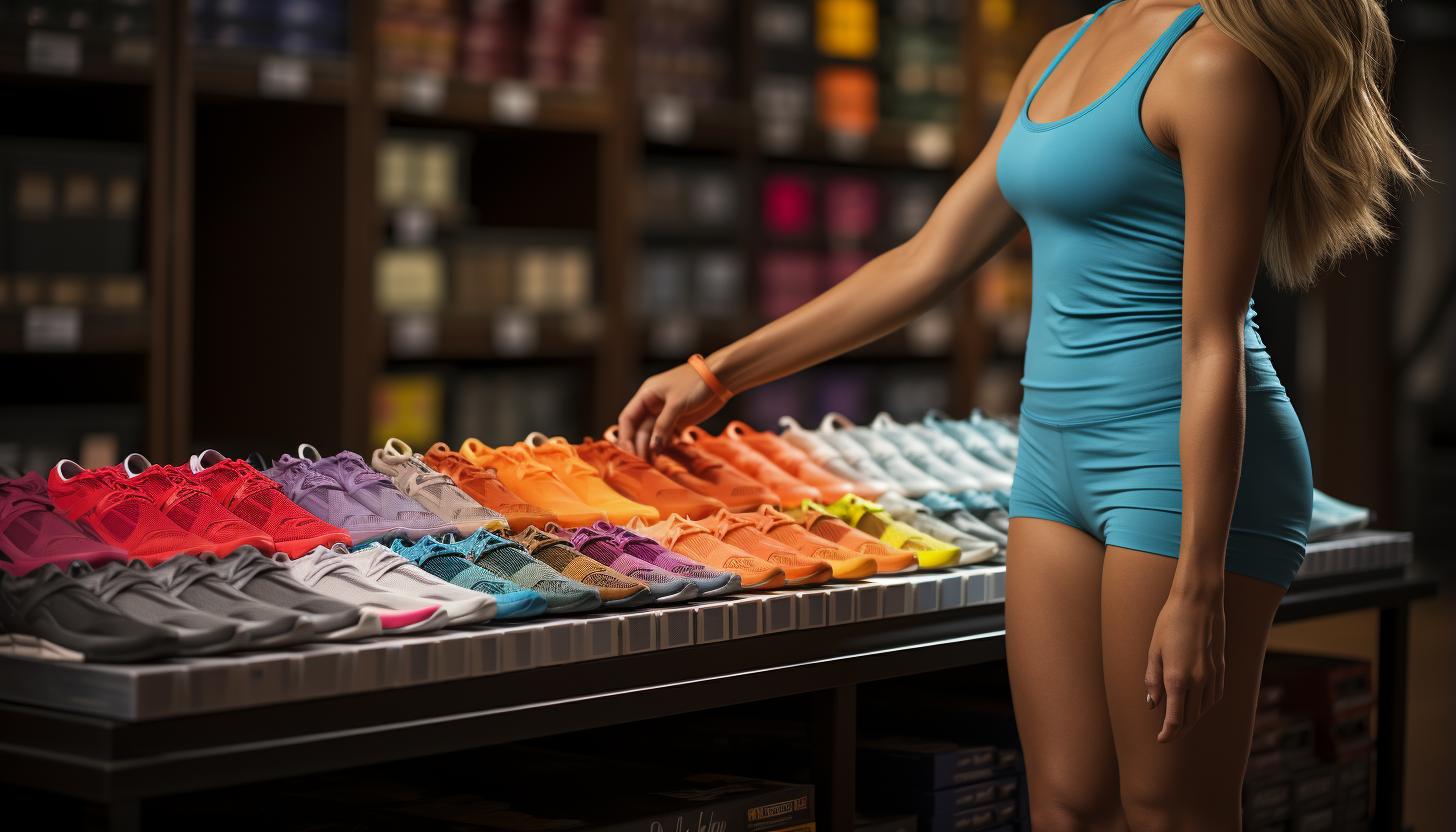
When it comes to finding the right shoe for your foot type, it’s important to consider factors such as arch height, pronation, and stability needs. Each person’s feet are unique, and understanding your foot type can help you find a shoe that provides the necessary support and comfort.
Here are three key things to keep in mind when looking for the perfect shoe:
1. Foot Pronation: This refers to how your foot rolls inward or outward when you walk or run. There are three types of pronation: overpronation, neutral pronation, and underpronation (also known as supination). It’s crucial to choose a shoe that supports your specific pronation type to prevent injuries and enhance performance.
2. Arch Support: Your arch height plays an essential role in determining the level of support you need from your footwear. High arches require shoes with ample cushioning and flexibility, while low arches benefit from shoes with enhanced stability features.
3. Stability Needs: Consider any specific foot conditions or issues you may have, such as plantar fasciitis or bunions. These conditions may require additional features like extra cushioning in certain areas or wider toe boxes for added comfort.
Exploring Different Brands and Models
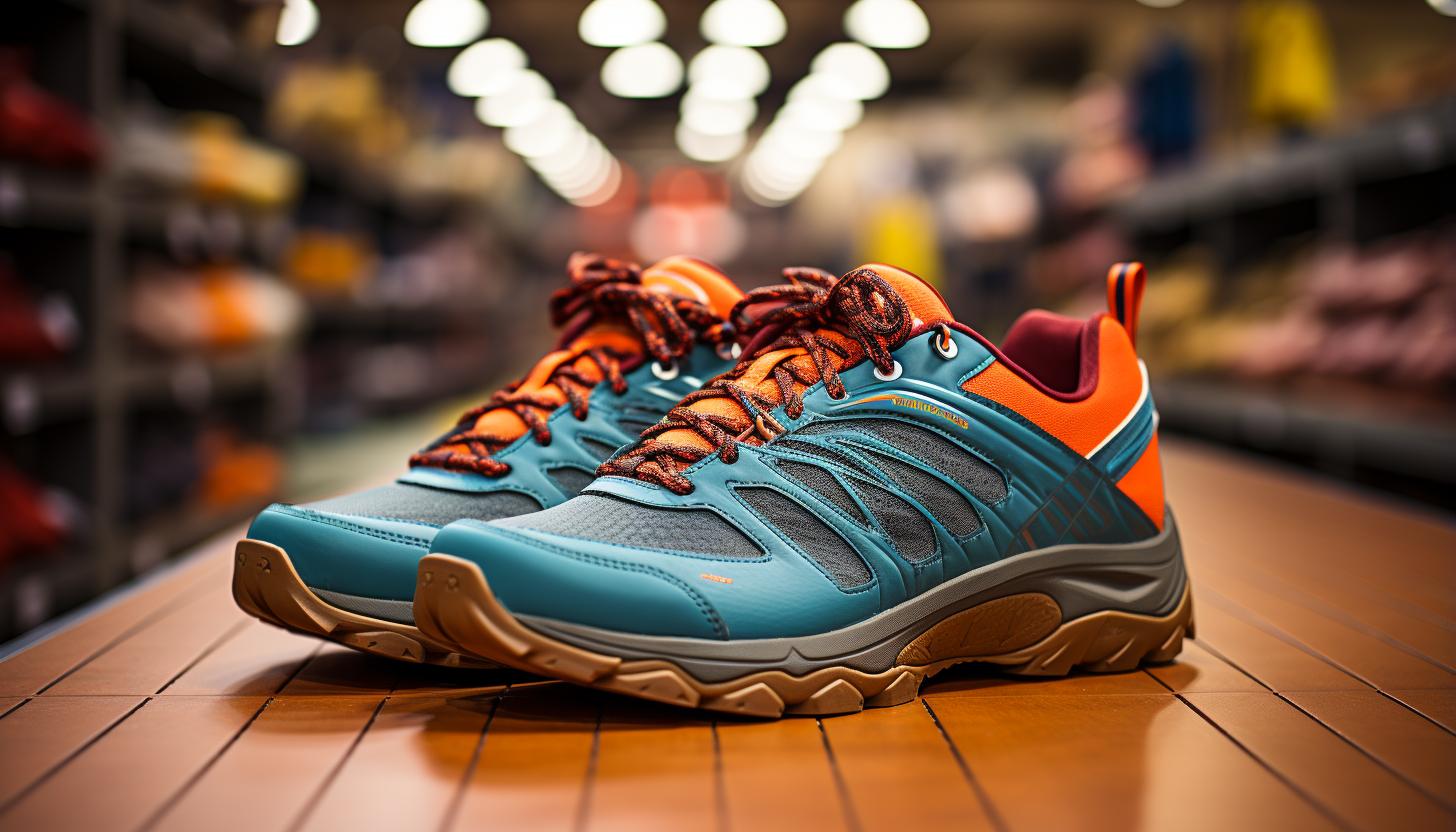
Exploring different brands and models can help you find a shoe that suits your unique foot type and provides the necessary support and comfort. When it comes to choosing running shoes, there are several factors to consider.
One important aspect is shoe durability and longevity. You want a pair of shoes that will last through many miles of training without falling apart. Look for well-known brands that have a reputation for making durable shoes, as they often use high-quality materials and construction techniques.
Another key factor to consider is the impact of cushioning on performance. Cushioning plays a crucial role in absorbing shock during each stride, protecting your joints from excessive stress. Different brands offer various levels of cushioning, so it’s important to find the right balance for your needs. Some runners prefer minimal cushioning for a more natural feel, while others may require extra cushioning for added comfort.
By exploring different brands and models, you can compare their features and benefits to find the perfect fit for your running style. Once you’ve found the right pair of shoes, it’s important to maintain and care for them properly to extend their lifespan. In the next section, we will provide you with some useful tips on how to do just that.
Transition: Now that you understand the importance of exploring different brands and models in finding the perfect running shoe, let’s discuss some tips for maintaining and caring for your footwear to ensure they last as long as possible.
Tips for Maintaining and Caring for Your Running Shoes
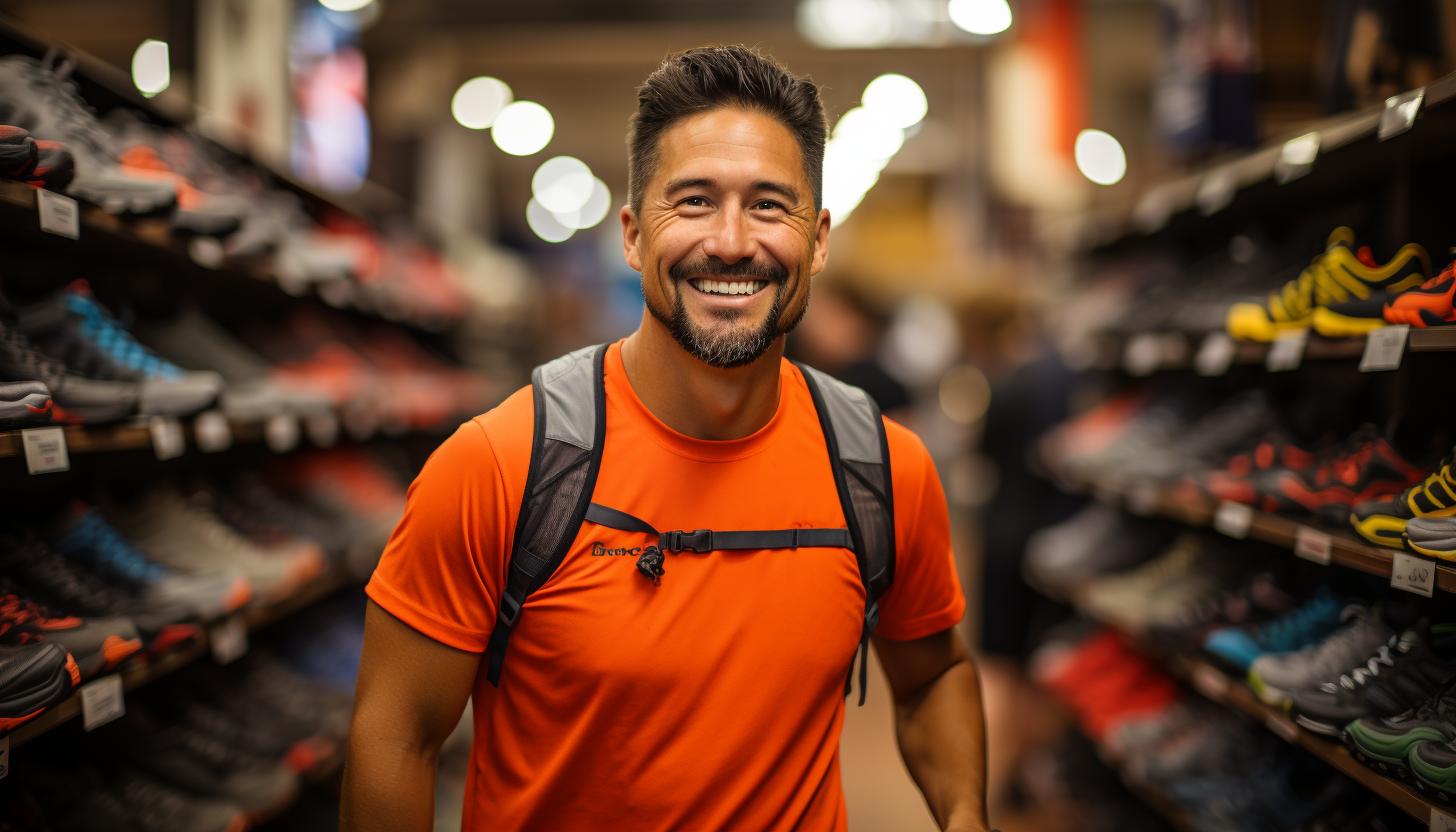
To keep your running shoes in good condition, remember to regularly clean them and store them in a cool, dry place. Proper maintenance is essential for maintaining durability and extending the lifespan of your beloved kicks. Here are some helpful tips to ensure your running shoes stay in top shape:
1. Clean them after each run: Use a soft brush or cloth to remove dirt and debris from the upper mesh and outsole. For stubborn stains, mix mild detergent with water and gently scrub the affected areas.
2. Air-dry them properly: After cleaning, let your shoes air-dry naturally at room temperature. Avoid exposing them to direct sunlight or using heat sources like hairdryers, as this can damage the materials.
3. Rotate between pairs: It’s beneficial to have multiple pairs of running shoes and rotate between them regularly. This allows each pair to fully dry out between runs, preventing odor buildup and extending their overall lifespan.
Conclusion
So there you have it, runner! You’ve reached the end of your journey to finding the perfect running shoes.
By getting fitted at a specialty running store and understanding gait analysis, you’ve taken the crucial steps towards preventing injuries and improving performance.
Remember to consider your foot type when choosing the right shoe and don’t be afraid to explore different brands and models.
And once you have your ideal pair, make sure to maintain and care for them properly.
Happy running!




